
12 minute read
2 Water scarcity: a real issue?
From a very young age, we learn that water is an essential element of life, so much so that it is even known as lifeblood. In recent decades, the growing world population and the mismanagement of natural resources have led to an unexpected issue: water scarcity, or when the demand for water is so high that it affects the quality and supply, and is impossible to satisfy.
According to the United Nations Educational, Scientific and Cultural Organization (UNESCO), 5 billion people may be affected by water scarcity by 2050. The main causes of this problem are climate change, increased demand, and contamination of the supply, among others.
What do you think?
Have you ever wondered if we might run out of water for human consumption? What problems do you think people who are currently affected by this situation deal with? Could we be affected by this problem?
The context
In this unit...
Target in action
Write a letter to the European Commission describing your concerns about water scarcity. Include a list of signatures collected to support the development of policies aimed at solving this issue.
Follow the thread!
Water scarcity affects more than 40% of the world’s population. Today, more than 1.7 billion people live in drainage basins where water consumption is too high and there is not enough river water.
The planet’s water: the hydrosphere
1
How much of our planet is water?
Rivers and other inland waters
2
What are the characteristics of freshwater bodies?
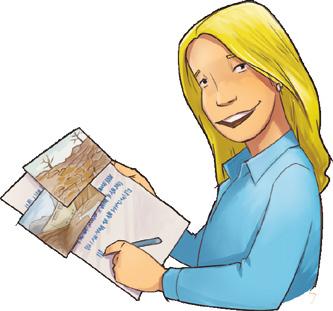
The hydrography of Spain
3
What are the characteristics of the water in your community?
The hydrography of Europe
4
What are the characteristics of the water in Europe?
Responsible water consumption
5
What must we consider when using water?
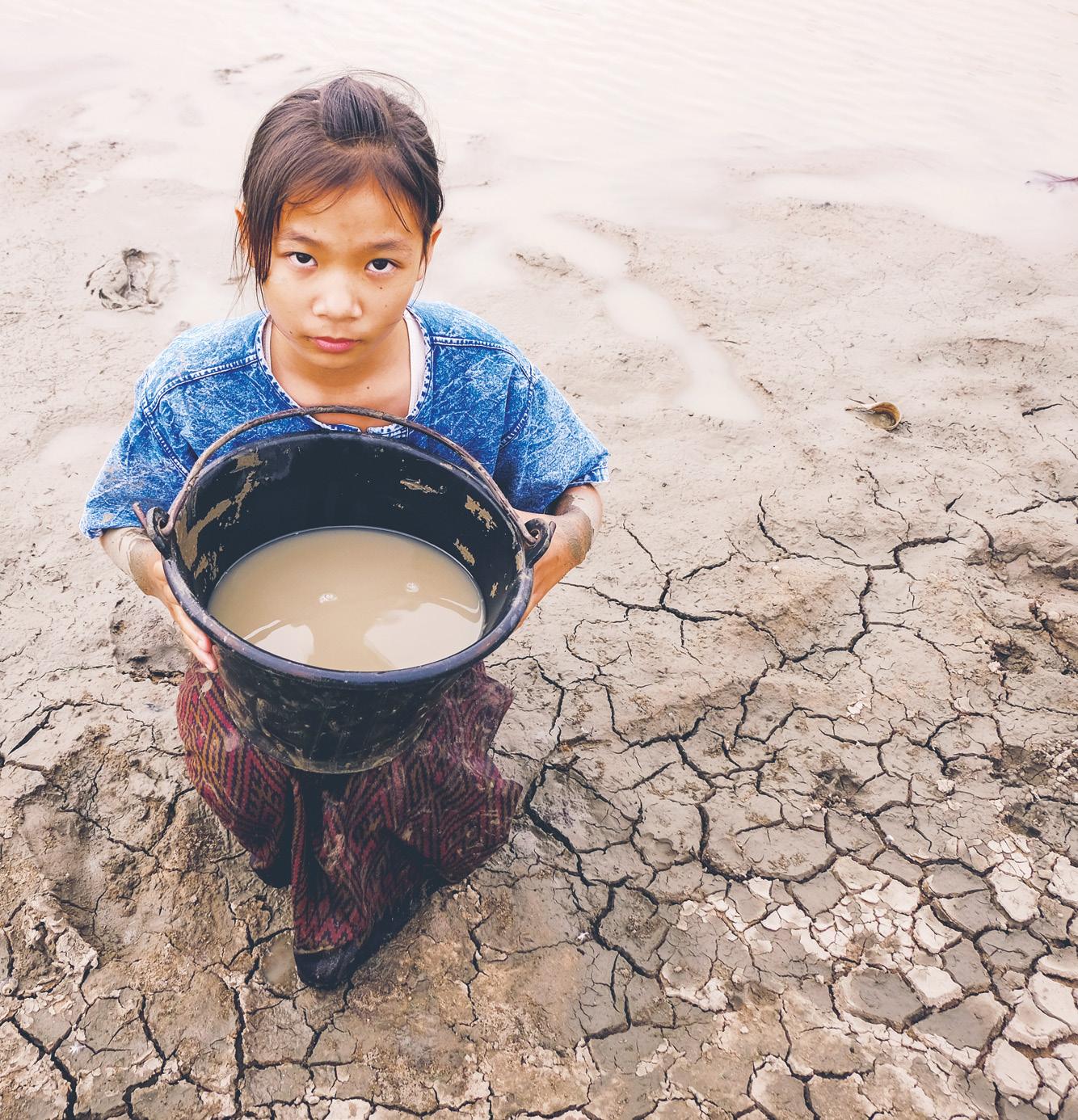
How much of our planet is water?
Is all the water on Earth fit for human consumption? What percentage is water that we can use?
The hydrosphere
The hydrosphere comprises all the bodies of water on Earth, including surface waters (seas, oceans, rivers, lakes, etc.), groundwater (found below the surface), and atmospheric water vapour. It covers approximately 70% of the Earth's surface . It is estimated that there is a total of 1,400 trillion litres of water on the planet.
Main characteristics
• Water is essential for all living things on the planet.
• It undergoes constant physical and chemical transformation, passing through the states of water and the water cycle.
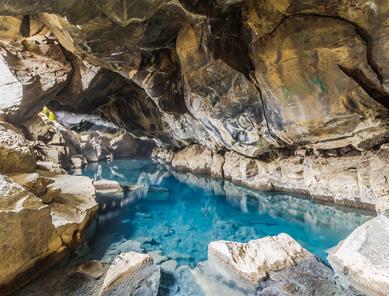
• It constitutes a fundamental part of both marine and terrestrial ecosystems.
• It interacts with the Earth's crust and alters its structure through erosion.
• Only a small percentage (approximately 1%) is fit for human consumption and that of other species.
Classifying water
Surface water
Bodies of water that are visible on the Earth's surface. Two main categories can be distinguished:
• Inland: Rivers, lakes, streams, lagoons, snow, polar ice caps, etc. These are usually freshwater and represent 2.5% of the planet's total water.
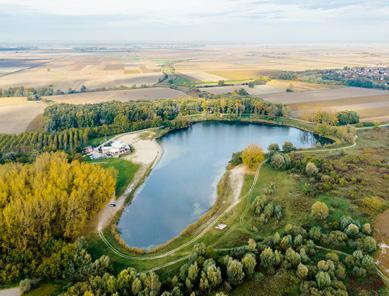
• Marine: Seas and oceans. These are large bodies of saltwater and represent 97.5% of the water on Earth.
Groundwater
Rainwater and surface water seep through the ground and accumulate beneath the earth, forming deposits called aquifers. They circulate underground, forming caves or galleries, which can rise to the surface and create fountains and springs. It is also possible to access them by building wells.
"Let me tell you", you will find a summary of the unit on anayaeducacion.es
The importance of the hydrosphere
• The hydrosphere helps regulate the Earth's temperature by absorbing heat from the sun since water heats up and cools down much more slowly than air.
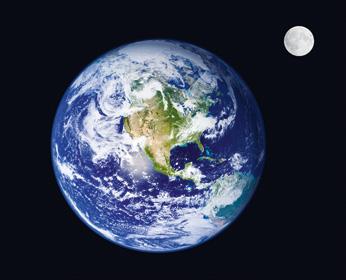
• Water is part of living cells. Without it, they would not be able to conduct their normal functions and life would not exist.
• Water is an essential element for plants to perform photosynthesis, a process through which the oxygen we breathe is produced.
• It hosts an enormous number of aquatic ecosystems, which are home to species belonging to the various kingdoms of living things.
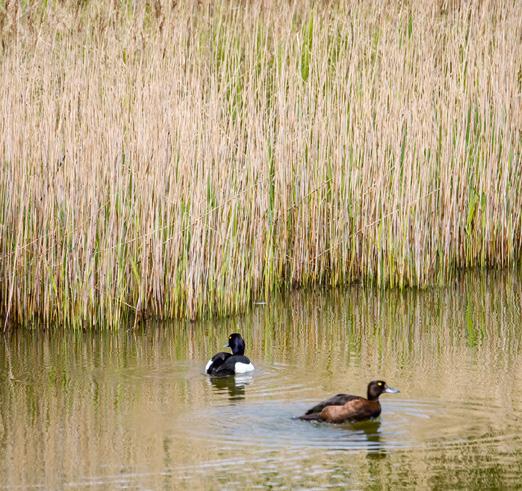
• People use water daily for cleaning, leisure, industry, transport, etc.
Dewdrops on plants
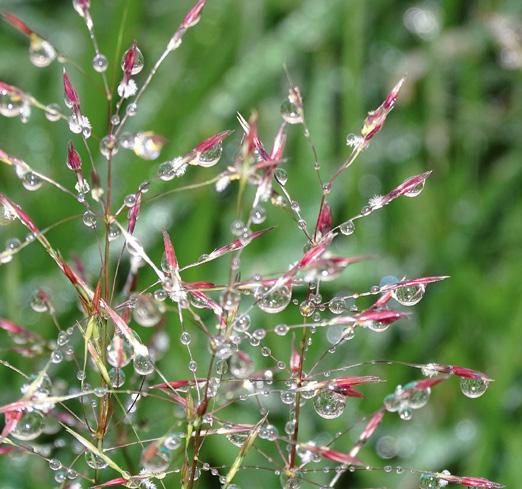
The distribution of water on the planet
Look at the graph of the distribution of water on the planet:
• What percentage of freshwater is in a liquid state?
• What percentage of surface water is freshwater?
• What are your reflections after looking at this data?
Aquatic ecosystem
1 How is the water that makes up the hydrosphere classified?
2 Search for information and respond: Why is sea and ocean water salty? Are the icebergs floating in the oceans made of saltwater or freshwater?
Take note!
Most of the freshwater on Earth is frozen. This limits the amount of liquid water suitable for human consumption to 1%.
What are the characteristics of freshwater bodies?
Do we take water scarcity into account when managing water resources?
Rivers
Rivers are freshwater streams that originate in mountainous areas and flow into a sea, ocean, lake, or another river. Rivers that flow into other rivers are called tributaries.
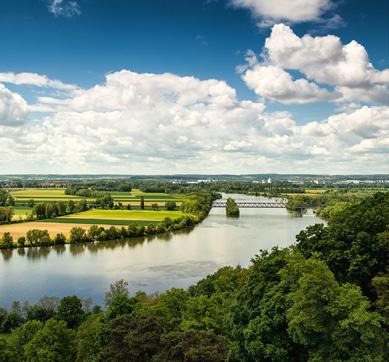
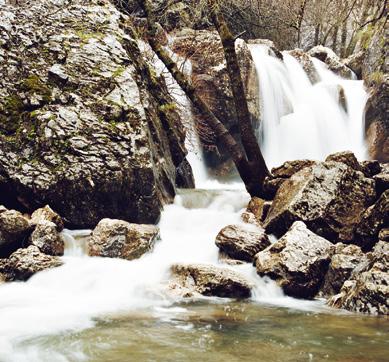
Elements of a river
• Source. The place where a river begins. It may be the result of an accumulation of rainwater or snowmelt or due to groundwater that has risen to the surface.
• Course. The path of the river from its source to its mouth.
– Upper course: The part closest to the source. This section is usually quite steep and, therefore, the water flows at high speed.
– Middle course. Section located between the upper and lower courses. Areas with a lot of erosion alternate with areas of sedimentary deposits due to changes in slope.
– Lower course: This is the section closest to the river mouth. Here, there is practically no slope, so the water flows slowly, forming meanders.
• Mouth. The place where the river meets the sea or ocean. Deltas or estuaries may form due to sediment deposits.
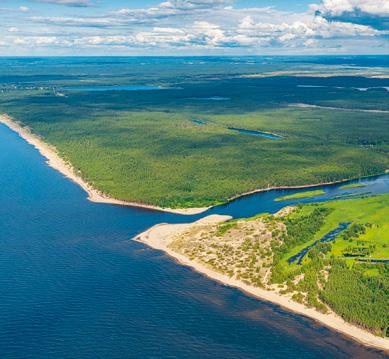
• Riverbed. The entire ground which the river flows over.
• Basin: Set of lands whose rivers flow into the same sea or ocean.
Characteristics of a river
• Length. Total distance from the source to the mouth of the river.
• Flow. The amount of water carried by the river at a given time and place.
• Regime. Variation of the flow throughout the year. A river has a regular regime when it carries the same amount of water throughout the year. It has an irregular regime when there are times of the year when it almost dries up and others when its discharge increases a lot.
Freshwater bodies on the Earth
Research: What percentage of the planet's freshwater corresponds to each of these bodies of water:
• Rivers.
• Lakes.
• Groundwater or aquifers.
• Glaciers.
Factors that affect a river
• The relief: It influences the length of the river and the speed of the water. The further the mountains of the river’s source are from its mouth, the longer the river.
• The climate. It influences the discharge and regime of the river. In areas where the climate includes abundant and constant rainfall, the rivers regimes are regular. Areas with drier climates have irregular river regimes.
Other inland waters
• Lakes: A lake is a large body of water located in a basin in the ground. It can collect rainwater, groundwater or water from one or more rivers. Small lakes are known as lagoons. These are usually freshwater, although there are some saltwater lagoons.
• Aquifers: Accumulations of groundwater that occur when surface water seepage forms considerable freshwater deposits.
• Glaciers: Large bodies of frozen freshwater. They can be found at the poles and at the top of high-altitude mountains. Almost 10% of the total land surface is currently covered by glaciers.
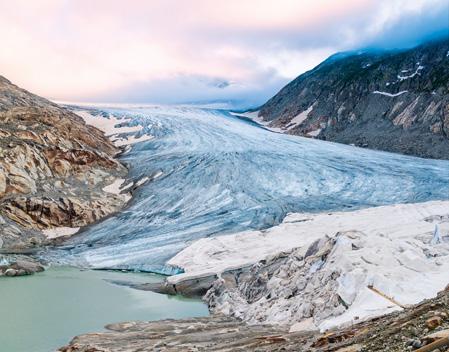
1 What are the features of a river?
2 What is the difference between a river with a regular regime and one with an irregular regime?
3 What factors affect a river? How so?
4 In groups, do some research and discover how deltas and estuaries are formed.
Take note!
The contamination of rivers, streams, lakes and pools due to the dumping of toxic waste is one cause of water scarcity since it makes the water unfit for human consumption.
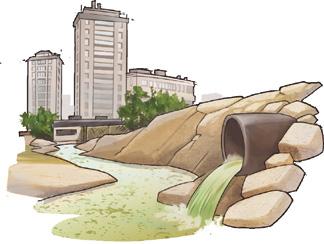
What are the major rivers and lakes in Spain?
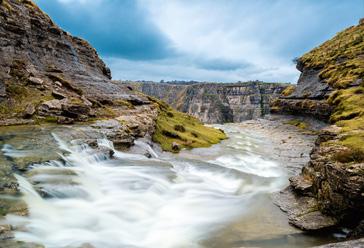
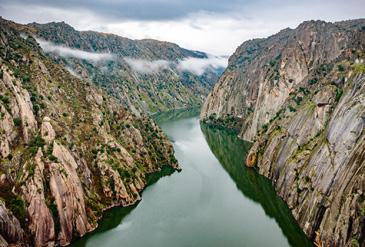
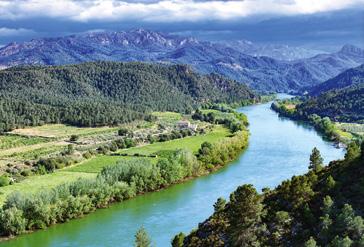
Are there measures in Spain aimed at making adequate use of water resources?
Rivers of Spain
In general, the rivers of Spain are irregular and relatively short. Only five are over 500 km long. They can be categorised into three watersheds, depending on the ocean or sea into which they flow.
Language Bank
Speaking. Play “Finish the sentence” with a classmate. Writing. Write a postcard to your friend telling them about your holidays.
1 Let’s check Put these rivers in order from longest to shortest and locate them on the map: Guadiana: 818 km; Douro: 897 km; Guadalquivir: 657 km; Tagus: 1,007 km; Ebro: 930 km.
Watersheds of Spain
The Cantabrian watershed These rivers all flow into the Cantabrian Sea. They are short rivers due to how close the mountains are to the sea. They are abundant and regular since the climate of this area is characterised by abundant rainfall throughout the year. From east to west, the most significant rivers in this watershed are the Bidasoa, Deva, Nervión, Pas, Saja, Besaya, Sella, Nalón, with its tributary Narcea, Navia and Eo.
The Atlantic watershed
The rivers of this watershed flow into the Atlantic Ocean. Two groups can be distinguished:
• Rivers of Galicia: These are short, abundant and regular rivers, due to the area’s weather and relief. Some worth noting are the Eume, Tambre, Ulla and Miño, with its tributary Sil.
• Rivers of the Meseta and the Guadalquivir valley: These are long rivers since the source is located in mountain ranges far from the mouth. They are mighty and have an irregular regime since they only get rain in autumn and spring. From north to south, the major rivers are the Duero, Tagus, Guadiana and Guadalquivir with their tributaries.
The Mediterranean watershed These rivers flow into the Mediterranean Sea.
• Southern rivers. Short rivers originating in the Penibaetic range, with low discharge and an irregular regime due to low rainfall. From east to west: Guadiaro, Guadalhorce, Guadalfeo, Andarax and Almanzora.
• Eastern rivers: These rivers have low discharge, an irregular regime and vary in length, except the Ebro and the Ter. From north to south, the most significant are the Ebro, Ter, Llobregat, Júcar and Segura. The Ebro River is the mightiest in Spain and also the longest, since all 930 km of it are located entirely within Spanish territory.
in Spain
Take note!
It is estimated that by the year 2030, 65% of the Spanish population will suffer the consequences of water scarcity.
Lakes and lagoons
In Spain, there are lakes and lagoons, many of glacial origin. They are home to a natural diversity that deserves to be cared for and admired.
The most prominent are:
• Sanabria Lake (Zamora), the largest glacial lake in Spain and Europe. It is surrounded by sandy and stone beaches.
• Lakes of Covadonga (Europa Peaks, Asturias), also of glacial origin, at more than 1,000 m high.
• Gallocanta lagoon (Zaragoza), the largest saltwater lagoon in Spain. It is a very important refuge for migratory birds.
• Black lagoon (Picos de Urbión, Soria), a glacial lake surrounded by pine forests and granite walls that give the water a dark colour.
• Ruidera lagoons (Albacete and Ciudad Real), a series of lagoons connected to each other by waterfalls and underground channels.
Groundwater in Spain
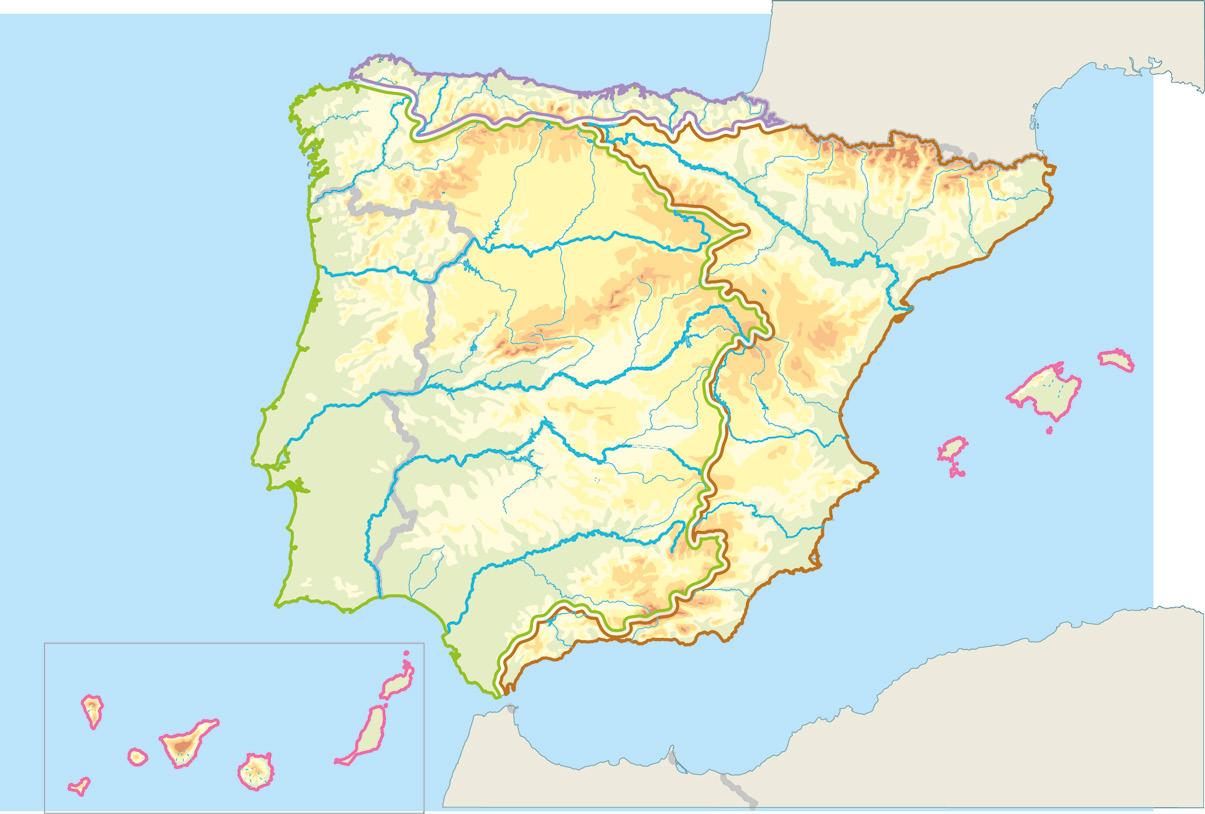
In 2022, the Ministry for the Ecological Transition and the Demographic Challenge (Miteco) started preparing a strategy manage the water crisis. A report by the Ministry reveals that 48% of groundwater bodies are in poor condition and that the quality of river water has also declined. Based on this information, do some research online and write down and describe the main national measures that have been proposed to deal with this issue.
2 What are the main characteristics of the rivers of Spain?
3 Which is the largest lake in Spain? Where is it located?
What are the characteristics of the water in Europe?
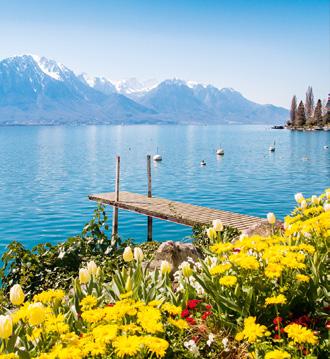
Is Europe one of the continents most likely to suffer from water scarcity in the coming years?
Oceans and seas
Europe is almost entirely surrounded by oceans and seas. The Arctic Ocean borders the continent to the north, while the Atlantic Ocean is to the west.
Some of the European seas are the Norwegian, Baltic, Cantabrian, Mediterranean, Adriatic, Tyrrhenian and Aegean. There are also two inland seas: the Black Sea and the Caspian Sea.
Lakes
There are many lakes in Europe. In the north are the two largest lakes in Europe: Lake Ladoga and Onega, both in Russia. Central European lakes such as Geneva (between France and Switzerland) and Constance (between Germany, Austria and Switzerland) are located along the Alps. Smaller lakes are found in the Mediterranean region, such as the Venetian Lagoon (Italy) and Lake Prespa (Greece).
Rivers
The characteristics of the rivers of Europe vary according to the local relief and climate.
Rivers in the Arctic and Atlantic watershed
These are usually long rivers with fairly extensive basins.
• Rivers in the Arctic watershed: The rivers that flow into the Arctic Ocean are usually abundant and have an irregular regime. Examples are the Northern Dvina and the Pechora.
• Rivers in the Atlantic watershed: These are generally mighty rivers with a regular regime. The Vistula, Oder, Elba, Rhine, Seine, Loire, Duero, Tagus and Guadalquivir all stand out.
Rivers in the Mediterranean watershed
Due to the climate and relief, these rivers are shorter, have low discharge and an irregular regime. Some examples include the Ebro, Rhone, Tiber and Po.
• Rivers that flow into inland seas: These are long, abundant and navigable rivers.
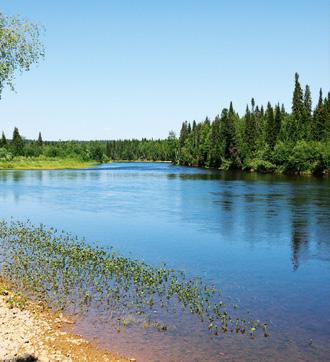
• Rivers that flow into the Black Sea: The Danube, the Dnieper, the Dniester and the Don.
• Rivers that flow into the Caspian Sea: The Ural and the Volga, which is the largest and longest river in Europe at 3,530 km long.
Language Bank
Speaking. Work with a classmate and correct their mistakes.
Writing. Write sentences about your mistakes and say where you were.
European water resources
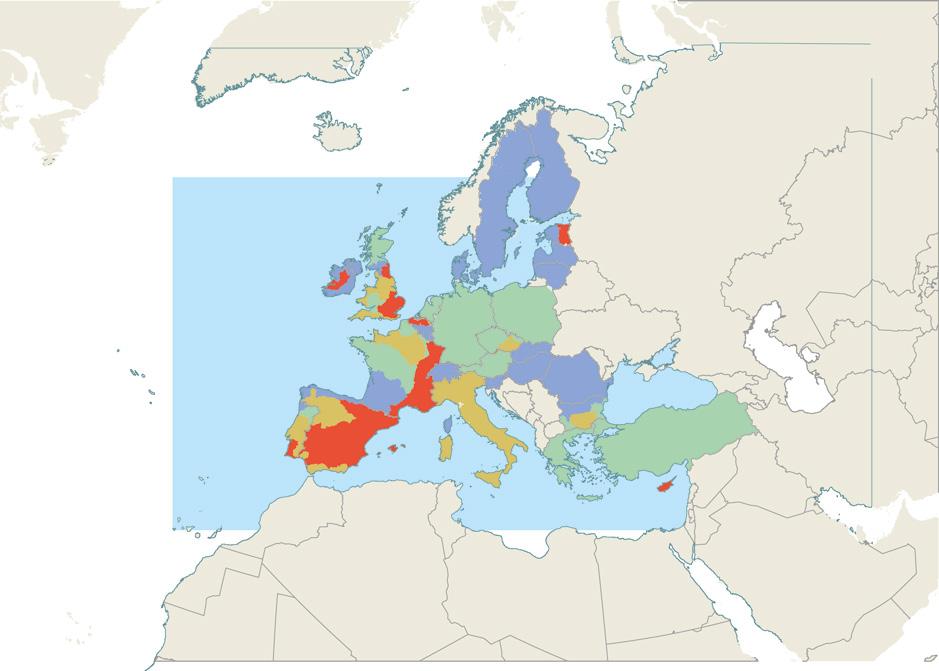
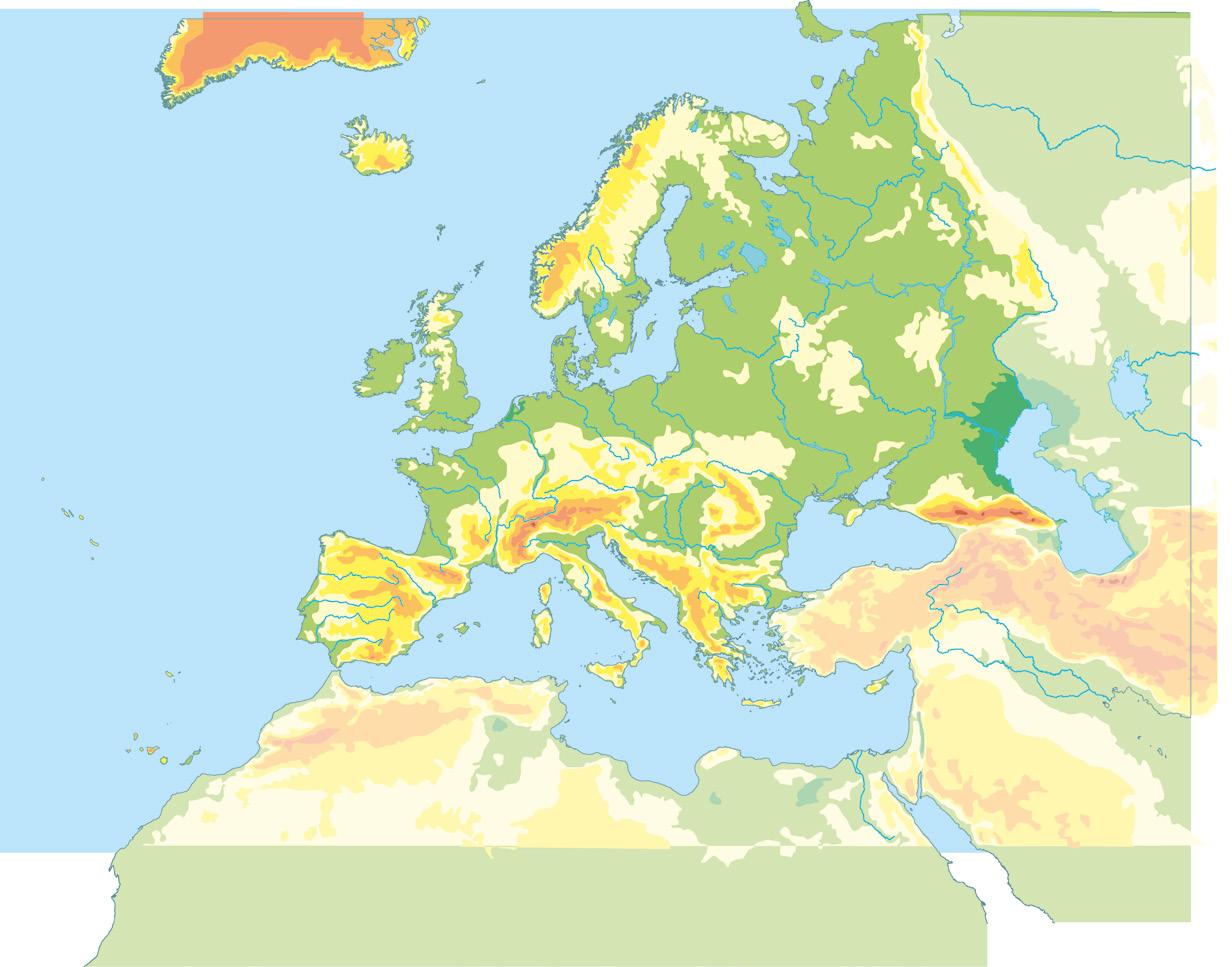
Draw a map of Europe and highlight the seas and oceans that surround our continent.
What is the longest river in Europe? Search online for the countries it crosses, all the way from its source to its mouth.
How are European lakes classified?
Choose the European river that grabs your attention the most and make a poster with basic information and images. You can include the source, length, discharge, country (or countries) it flows through, interesting facts, state of conservation, etc.
What must we consider when using water?
Is water scarcity in our hands? Are there measures we can take to prevent it?
Water is life
As mentioned, water is an essential resource for life, since no living being can survive without it.
Here are some facts that prove why it is important to use water responsibly:
• More than 2 billion people do not have access to safe drinking water. This poses a serious health risk.
• 97.5% of the water on Earth is saltwater, meaning only 2.5% is freshwater. Of the total freshwater, only 1% is located in surface waters such as rivers and lakes.
• Every 20 seconds a child dies in the world due to the consumption of non-potable water and malnutrition.
• Many families in least-developed countries have to walk approximately five hours every day to access water.
• World Water Day has been celebrated since 1993 to call attention to the importance of making proper use of water.
Uses of water
Humans use water every day. We can categorise its use as follows:
Household use: This is how we use water for our personal well-being. It includes house cleaning, food, laundry, and personal hygiene and grooming.
Use in the primary sector: Agriculture and livestock are economic activities that require the use of water, either to irrigate fields or to water animals.
Language Bank
Speaking. Make a survey and ask your classmates how they use water.
Writing. Write the conclusions of your survey.
Use in industry: Most factories need water to manufacture products.
Public use: In our area, water is also used for the benefit of citizens, such as in fountains, to clean streets and public buildings, to irrigate parks, etc.
Water as an energy source: People also use water to generate electrical energy or kinetic energy, which enables us to move heavy machinery.
Responsible water use: Water used in swimming pools, water parks, to play sports and enjoy our free time.
How we manage the planet's drinking water
Take a look at this map. It shows the percentage of water consumed by industry, agriculture and household use on each continent.
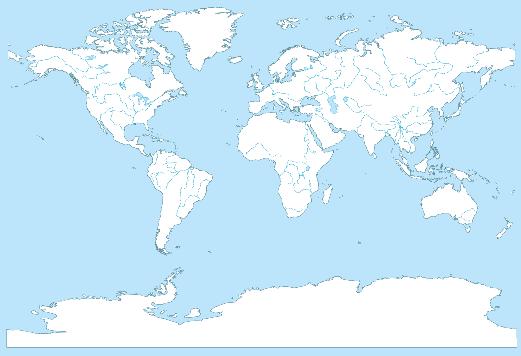
• What does the situation look like for the majority of the continent?
• What are the percentages for Europe?
• Which use has the lowest percentage for each continent?
• Which continent allocates the most water to agriculture? What about industry?
• What conclusions can you draw from this information?
Measures for water conservation and responsible use
We must use water responsibly, place value on its importance and take efficient and responsible measures to ensure that we have drinking water now and in the future.
• Periodically review household water taps. Leaks can sometimes occur, so it's important to be aware of them.
• Take a shower, not a bath. If a family member can only take baths, use the water for other household tasks.
• Collect rainwater. You can use it to water plants and clean the house.
• Install low-flow toilets. The double button that you often see on toilet tanks lets you choose whether you want to use more or less water.
• Do not use the toilet as a rubbish bin. When you toss rubbish such as paper or wipes down the toilet, it travels through the pipes and causes blockages and water contamination.
• Cover pools when not in use to prevent water evaporation and reuse the water in the next season.
• Use sprinklers and drip systems to irrigate.
• Turn off the tap while washing your hands, brushing your teeth, showering and washing the dishes.
• Only run the washing machine and dishwasher when they are completely full.
• Do not toss rubbish that might contaminate the water down the drain, including oil, solvents, cleaning products, etc.
1 It all adds up What water conservation measures do you think are the most important? Which ones can we take at home and at school?
Take note!
can not be renewed.






